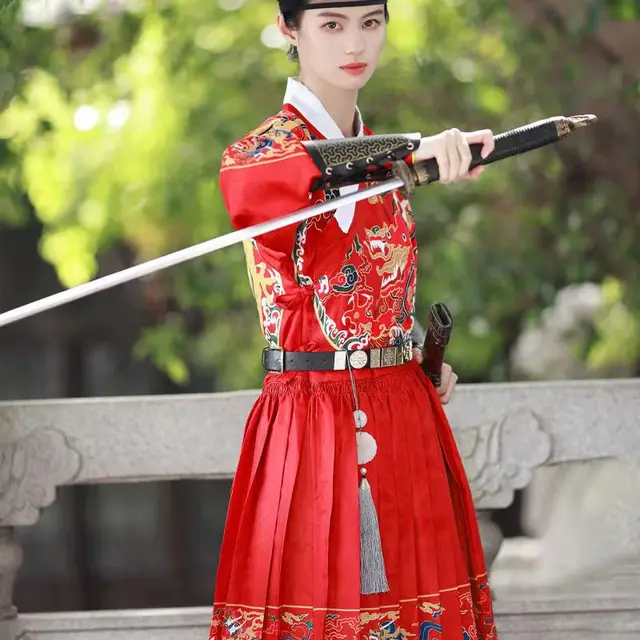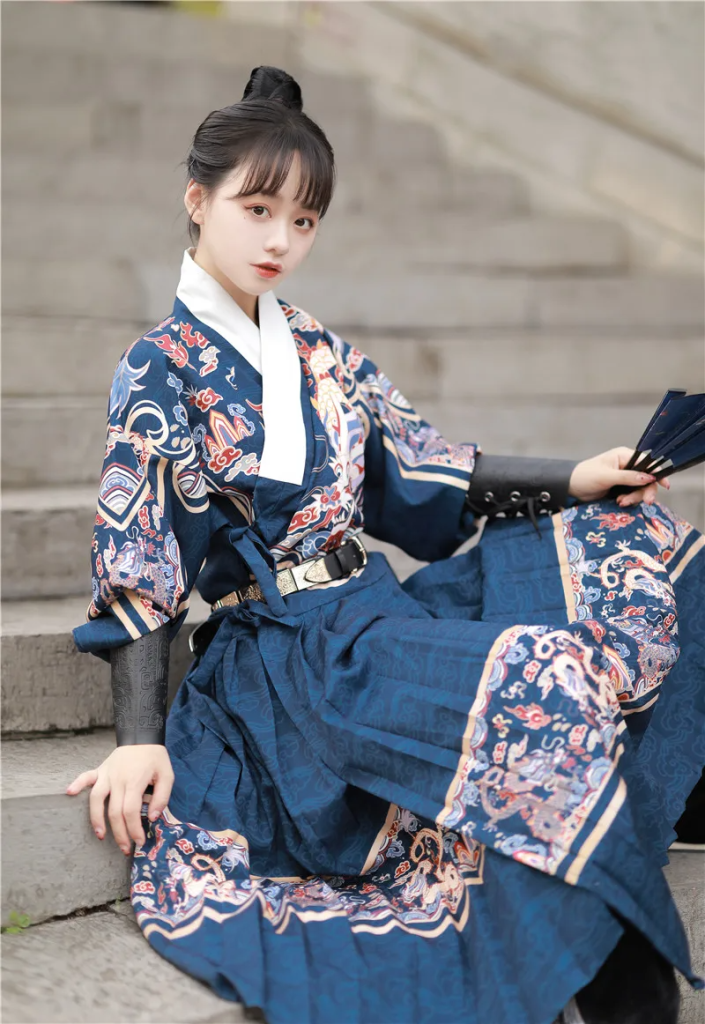Introduction to the Flying Fish Suit
The Ming Dynasty (1368-1644) witnessed the emergence of an elaborate and distinctive costume known as the Flying Fish Suit. This ceremonial attire, reserved for high-ranking officials, played a significant role in the dynasty’s court culture and social hierarchy.
Origin of the Name
The Flying Fish Suit derived its name from the intricate embroidery adorning its front and back, which depicted a mythical creature resembling a flying fish. The suit consisted of:
- A long robe: Typically made of silk or satin, featuring a wide, flowing silhouette with long, wide sleeves.
- A belt: Known as a “jade belt,” made of jade or other precious materials to cinch the waist.
- A hat: Called a “flying fish hat,” it was a tall, conical headpiece with a wide brim.

Symbolism and Status
The Flying Fish Suit was not merely decorative but also a symbol of authority and status. The number and size of the flying fish embroidered on the suit indicated the wearer’s rank. The highest-ranking officials, including the emperor and his closest advisors, wore suits with the most elaborate embroidery. The suit also served to distinguish between different departments within the government:
- Ministry of Rites: Suits with blue flying fish.
- Ministry of War: Suits with red flying fish.
Cultural and Aesthetic Value
Beyond its official significance, the Flying Fish Suit also held cultural and aesthetic value. The intricate embroidery and vibrant colors showcased the Ming Dynasty’s artistic prowess. The suit’s flowing lines and graceful silhouette reflected the dynasty’s emphasis on elegance and refinement.

Evolution and Legacy
The Flying Fish Suit continued to be worn during the Qing Dynasty (1644-1912), which succeeded the Ming Dynasty. However, its use gradually declined as Western influences and modern dress styles gained popularity. Today, the Flying Fish Suit remains an iconic symbol of the Ming Dynasty and is preserved in museums and historical collections around the world.
The Flying Fish Suit of the Ming Dynasty was a remarkable costume that embodied the dynasty’s court culture, social hierarchy, and artistic achievements. Its intricate embroidery, flowing silhouette, and symbolic significance made it a powerful symbol of authority and status. While its use has diminished over time, the Flying Fish Suit continues to fascinate and inspire as a testament to the Ming Dynasty’s rich cultural heritage.
The Design and Construction of the Flying Fish Suit
Overview of the Suit’s Design
The Flying Fish Suit, an iconic costume of the Ming Dynasty, was a testament to the dynasty’s artistic and technological prowess. Its intricate design and meticulous construction reflected the cultural and social significance of the Ming court.
Design Features
- Main Body: Typically made of silk or satin, adorned with intricate embroidery and embellishments.
- Robe: A long robe with wide sleeves.
- Trousers: The lower portion featured a pair of loose trousers.
- Collar: Known as the “horse-hoof collar,” made of stiff fabric, shaped like a horse’s hoof, and often decorated with embroidery or metal studs.
Construction Process
The construction of the Flying Fish Suit was complex and time-consuming. Skilled artisans spent countless hours cutting, sewing, and embroidering the fabric. The embroidery, depicting auspicious symbols or mythical creatures, required great precision.
Practical and Symbolic Aspects
- Design Functionality: The wide sleeves and loose trousers allowed for freedom of movement, suitable for ceremonial occasions and military campaigns. The horse-hoof collar provided protection for the neck and shoulders.
- Symbolic Role: The suit symbolized status and authority, reflecting the wealth and power of the Ming Dynasty. Its distinctive appearance also helped identify and distinguish Ming soldiers on the battlefield.
Evolution of the Suit
Over time, the Flying Fish Suit evolved in design and ornamentation, becoming more elaborate with additional embroidery and embellishments. Its significance as a symbol of Ming culture and power continued throughout the dynasty.
The Cultural Impact of the Flying Fish Suit
Importanza culturale
The Flying Fish Suit of the Ming Dynasty (1368-1644) was an iconic garment that played a significant role in shaping the cultural landscape of the era. Adorned with intricate embroidery and vibrant colors, it held immense cultural value.
Symbolism and Influence
- Design Inspiration: The suit was inspired by the mythical flying fish, symbolizing agility and swiftness. It featured a long, flowing robe with wide sleeves and distinctive “wings” on the shoulders.
- Cultural Representation: It represented the power and authority of the Ming Dynasty, with officials wearing it as symbols of the emperor’s favor.
Impact on Fashion and Art
The Flying Fish Suit had a profound impact on Chinese fashion and aesthetics. Its intricate embroidery and vibrant colors influenced the development of later Chinese textiles and costumes. The design also inspired other forms of art, such as painting and sculpture.
Role in Cultural Identity
The Flying Fish Suit became a symbol of Chinese pride and cultural heritage. Even during the Qing Dynasty (1644-1912), it was worn by high-ranking officials as a reminder of the Ming Dynasty’s legacy.
The Flying Fish Suit was not merely a garment but a cultural icon that embodied the power, artistry, and cultural achievements of the Ming Dynasty. Its intricate design and symbolic significance left an enduring mark on Chinese fashion, art, and cultural identity, continuing to inspire and fascinate generations.
